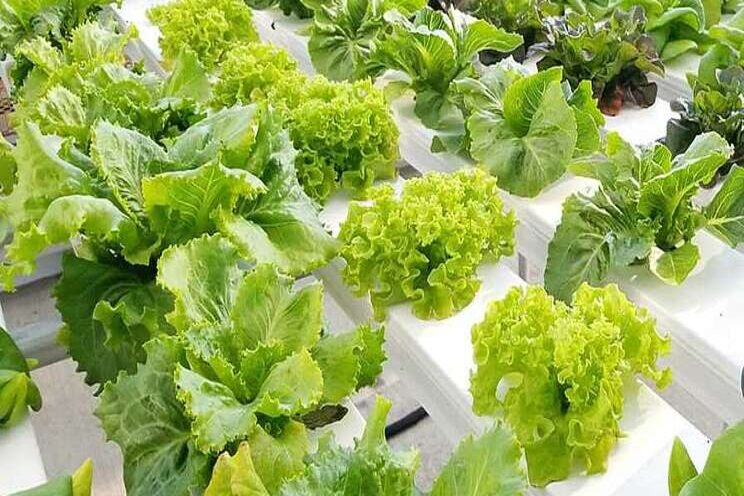Is your lettuce crop starving for calcium?
Added on 13 November 2020

Transpiration powers this upward flow as the plant photosynthesizes and releases water molecules into the environment. Calcium serves several important purposes within plants. Strong cell walls require calcium to be incorporated in their structure, with adequate supplies leading to well-formed, healthy leaves and stems. Several biological processes also employ calcium as a signaling molecule, keeping plant development on-track, or responding to changing environments.
Lettuce is a long-cultivated crop; calcium requirements have been well documented and the differences between field and greenhouse production understood. Hydroponic lettuce production calls for 100 to 150 ppm calcium throughout the growth cycle. The calcium must be supplied by the water rather than obtained from field soil. Tap water contains some calcium, but often not enough to hit this target.
Hydroponic producers may incorporate a calcium-nitrate-based fertilizer to provide both calcium and nitrogen to their crop. Calcium chloride at 1 pound per 100 gallons can also be applied as a foliar spray to help deliver calcium to leaves when transpiration is low.
Know the Symptoms
In lettuce, calcium deficiency often manifests as tip burn on developing leaves. Tip burn gives leaf margins a burned or crinkled appearance and will affect their appearance throughout development. The damage continues to affect new leaves until the cause of the deficiency is remedied. Damaged tissue can go on to become necrotic, providing a potential point of entry for secondary Botrytis infection. Overall, tip burn reduces health, appearance, and shelf-life of lettuce heads and leaves.
Pinpoint the Root Cause
Identifying the cause of calcium deficiency in lettuce can be a tricky topic, as it is not always caused by a lack of applied calcium. Since water carries calcium through the plant as transpiration occurs, calcium movement is dependent solely on transpiration rates. It will not matter how much calcium you supply to the root zone of your crop if you are growing in a humid, low-transpiration environment. Conversely, overly dry conditions causing plants to close their stomates and cease transpiration may also lead to calcium deficiency.
Head lettuce is particularly susceptible to tip burn in humid environments. As lettuce heads develop, they enclose the apical meristem, or growing point, in an envelope of leaves. This creates a pocket of stagnant air, which can be resistant to outside air movement. Stagnant air cuts down on transpiration at the growing point, leading to less calcium being delivered and developing leaves becoming misshapen and tip burned. Alternatively, in high-light, low-humidity environments, lettuce will experience a surge in photosynthesis while closing off stomates to cut down on water loss. Again, movement of calcium is impeded within the plant even though there may be enough at the rootzone.
Remedying calcium deficiency first relies on identifying the cause. Step one is looking at the nutrient solution. Is there a high or low level of calcium in the base water? Is there a calcium source included in the recipe? Calcium is available over a wide pH range, so pH changes are often not necessary. Next, look at the environmental conditions. Appropriate airflow is essential, though it may require different equipment than other crops.
Successful lettuce growers often utilize vertical airflow fans over horizontal airflow. The downward direction of airflow allows air to be forced into and around the protected growing point of head lettuce. A gentle and constant flow is all that is necessary — high air speeds can lead to stomatal closure and tip burn once more. Finally, make sure photoperiods and light levels are appropriate for lettuce. A daily light integral (DLI) of 17 mols/m2/d is ideal for lettuce production, with a photoperiod between 14 to 18 hours.
Photo: Tip burn is a common problem in lettuce crops lacking calcium. Young leaves can develop In lettuce, calcium deficiency often manifests as tip burn on developing leaves. Tip burn gives leaf margins a burned or crinkled appearance and will affect their appearance throughout development.
Photo courtesy of Griffin
Source: Greenhouse Grower
Source: Greenhouse Grower
More news















